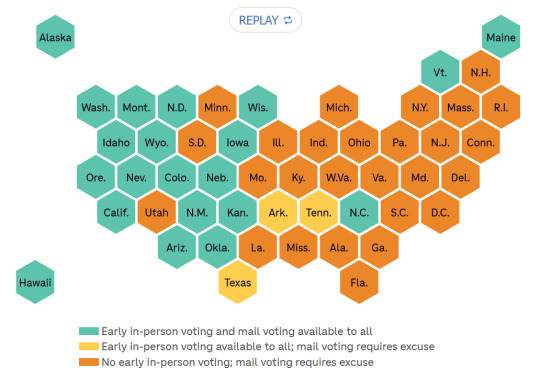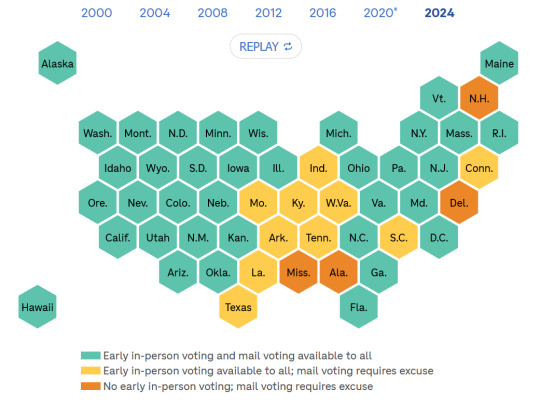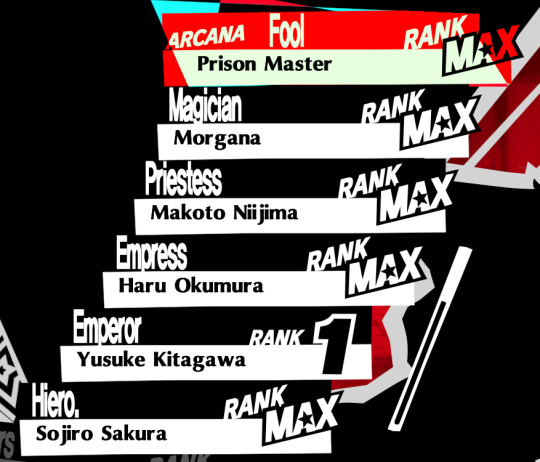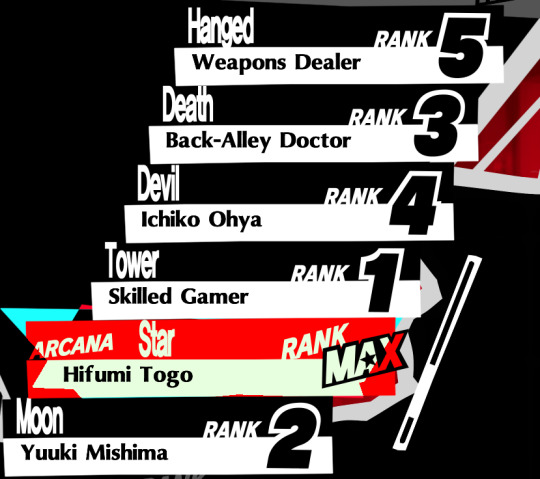#Tally Support & Implementation
Explore tagged Tumblr posts
Text
Watching the early cast interviews was a little heartbreaking. Taylor and Ashley wanted to make Bellcollar an iconic shounen anime duo so badly, and the writers were just. Not interested in doing that. The show was kind of weird about unit unity the whole way through, to be honest. Probably their Prestige inclinations showing though (remember, many of the producers went on to Succession, while Eliot himself preceded Motherland with Claws), so they don't subscribe to the standard genre model of the genre elements reflecting the relationship strengths and weaknesses, nor of the core relationships driving plot competence. (Again, see "iconic shounen anime duos".) So while they make gestures about the unit being better together, that doesn't actually show through in the action. Abigail's strength as a warrior develops through her relationships with Adil and her mother. Raelle's Mycelium powers are developed through her connections to Scylla and her mother. Tally is off getting mired in her harem of war criminal cougars. I really can't get over how making the S1 finale Witchbomb a red herring sours more over time. The entirety of S1's emotional journey culminates in that Bellcollar love confession on the ground, and then it turned out that the whole time Abigail linking with Raelle wasn't even necessary because the Mycelium would have reversed her death anyways. sad trombone noises It's sad! The actresses' chemistry was real, and they relished every little opportunity the writing would give them to play those dynamics, only for those moments to dwindle to just desperate reunion hugs every few episodes. Taylor at the end of After the Storm 1x1: "This is something. She's it. This is it. We're going to go all the way together." The show: Lol. Lmao, even.
#motherland fort salem#bellweather unit#bellcollar#the writers were so weirdly insistent that abigail be wrong about things all of the time with no follow up or narrative payoff#example: 3x5 Abigail tells Tally that her vision is all in her head and blaming Nicte. Why include this part?#instead of skipping to supportive analytical smart abigail proposing the prevention test?#and it's so noticeable because they don't do this with other characters and that it's not a part of her arc#let's not even get into how off the mark the show was in their implementation of integrating scylla into the unit#it's all there on paper and in gifs/screencaps but in context? nope#category: tv#not tagging this properly for reasons
3 notes
·
View notes
Text
#tally prime services in delhi#Tally Prime#Tally Customization & Modules#Tally Support & Implementation
1 note
·
View note
Text
For all the concern in recent years that U.S. democracy is on the brink, in danger or under threat, a report out Tuesday offers a glimmer of good news for American voters worried that casting a ballot will be difficult in 2024.
Put simply, the new data shows that voting in America has gotten easier over the past two decades. More voters have the ability to cast a ballot before Election Day, with the majority of U.S. states now offering some form of early in-person voting and mail voting to all voters.
"Although we often talk in a partisan context about voter fraud and voter suppression and whether voters have access to the ballot, the reality is, over the past 25 years, we've greatly increased the convenience of voting for almost all Americans," said David Becker, the founder and executive director of the Center for Election Innovation & Research (CEIR), which authored the new report...
The data shows that, despite real efforts by some Republican-led legislatures to restrict access at the margins, the trend in the U.S. since 2000 has been toward making it easier to vote: Nearly 97% of voting-age American citizens now live in states that offer the option to vote before Election Day.
"The lies about early voting, the lies about voting machines and efforts in some state legislatures to roll back some of the election integrity and convenience measures that have evolved over the last several decades, those efforts almost all failed," Becker said. "In almost every single state, voters can choose to vote when they want to."
Forty-six states and Washington, D.C., offer some form of early in-person voting, the report tallied, and 37 of those jurisdictions also offer mail voting to all voters without requiring an excuse...
In 2000

In 2024

Infographic via NPR. If you go to the article, you can watch an animation of this map that shows voting availability in every election since 2000.
There are some political trends that show up in the data. Of the 14 states that don't offer mail voting to all voters, for instance, 12 have Republican-led legislatures.
-via NPR, March 19, 2024. Article continues below.
But maybe the more striking trends are geographic. Every single state in the western U.S. has offered some form of early and mail voting to all voters since 2004, according to the data. And those states span the political spectrum, from conservative Idaho to liberal California.
"It's really hard to talk about partisanship around this issue because historically there just hasn't been much," Mann said. "We've seen voting by mail and early in-person voting supported by Republican legislatures, Democratic legislatures, Republican governors, Democratic governors. We see voters in both parties use both methods." ...
In 2020, New York, Connecticut and Massachusetts all made changes to make voting more easily accessible, which have since partially or fully become permanent. Delaware is currently embroiled in a legal fight over whether it can implement early and mail voting changes this election cycle as well.
The South, with its history of slavery and Jim Crow laws, has long lagged behind when it comes to voting access. The CEIR data shows that, although some states have slowly started expanding options for voters, generally it is still the most difficult region for voters to cast a ballot.
As options nationwide have become more widely available, voters have also responded by taking advantage.
In the 2000 election, 86% of voters voted at a polling place on Election Day, according to U.S. Census Bureau data.
In 2020, during the pandemic, that number dropped to less than 31% of voters. It went back up in 2022, to roughly half of the electorate, but was still in line with the two-decade trend toward more ballots being cast early.
...in reality, Becker says, more voting options actually make elections more secure and less susceptible to malicious activity or even human error.
"If there were a problem, if there were a cyber event, if there were a malfunction, if there were bad weather, if there were traffic, if there were was a power outage, you could think of all kinds of circumstances. ... The more you spread voting out over a series of days and over multiple modes, the less likely it's going to impact voters," he said...
-via NPR, March 19, 2024
#united states#voting#voting matters#early voting#mail in ballots#voting access#american politics#us elections#election 2024#us politics#democrats#republicans#election day#election news#good news#hope
481 notes
·
View notes
Text
[ 📹 The dead and wounded are recovered by local residents after a bombing conducted by the Israeli occupation army targeted a house this morning near the European Gaza Hospital in Khan Yunis, in the south of Gaza. ]
🇮🇱⚔️🇵🇸 🚀🏘️💥🚑 🚨
248 DAYS OF "ISRAEL'S" GENOCIDE IN GAZA: GANTZ AND EISENKOT RESIGN FROM UNITY WAR CABINET, US-MADE SMALL DIAMETER BOMB USED IN LATEST MASSACRES, THIRD OF AMERICAN JEWS NOW SAY "ISRAEL" COMMITTING A GENOCIDE IN GAZA, MASSACRES CONTINUE ANOTHER DAY
On 248th day of the Israeli occupation's ongoing special genocide operation in the Gaza Strip, the Israeli occupation forces (IOF) committed a total of 5 new massacres of Palestinian families, resulting in the deaths of no less than 40 Palestinian civilians, mostly women and children, while another 218 others were wounded over the previous 24-hours.
It should be noted that as a result of the constant Israeli bombardment of Gaza's healthcare system, infrastructure, residential and commercial buildings, local paramedic and civil defense crews are unable to recover countless hundreds, even thousands, of victims who remain trapped under the rubble, or who's bodies remain strewn across the streets of Gaza.
This leaves the official death toll vastly undercounted as Gaza's healthcare officials are unable to accurately tally those killed and maimed in this genocide, which must be kept in mind when considering the scale of the mass murder.
Ministers Benny Gantz and Gadi Eisenkot submitted their resignations from Israeli Prime Minister Benjamin Netanyahu's war cabinet on Monday, citing the Prime Minister's handling of the war in Gaza.
The move leaves Netanyahu and his Likud party with a slim majority that continues to allow the Prime Minister to retain control for the time being.
In identical letters submitted to the Prime Minister, Gantz and Eisenkot left room for their eventual return to the fold, writing that "if a broad unity government is established that will work for the state of israel, for all that comes from that, we will also mobilize to be part of it."
The two ministers, who joined Netanyahu's war cabinet at the start of the genocide in Gaza, claimed they were leaving the government due to the "foreign and political considerations" of the Prime Minister.
Gantz and Eisenkot's resignation explains how Netanyahu was “preventing us from advancing to the real victory," adding that "recently we have witnessed that the decisions made by the government and by you [Netanyahu] are not necessarily motivated by national considerations and the good of the country. foreign and political considerations have infiltrated the discussion rooms and influence the decision-making."
The two ministers said they will continue to support any "correct action" that the Netanyahu administration makes, and that they could possibly return "as soon as a responsible outline is brought in for the return of the abductees, we will be ready to provide all the necessary support in order to enable its transfer and for the duration of its implementation."
Concluding the resignation letter, Minister Eisenkot added in the last line that "hopefully for change, for israel to be strong and just, a legacy and future worthy of our people," while Minister Gantz added that he "had the privilege of serving the state of israel in its difficult time!"
In other news, with large-scale destruction and massive casualties inflicted on Palestinians in recent Israeli operations in the Gaza Strip, a report published in the American media looks into the munitions being used by the Zionist regime.
According to the report, it was revealed that the Israeli occupation army has been using the American-made GBU-39 Small Diameter Bomb, a "precision-guided" munition, during military operations in densely populated civilian neighborhoods, resulting in the deaths of dozens of Palestinians, during recent operations like the one on Saturday to recover 4 hostages from the Al-Nuseirat Refugee Camp, in central Gaza, that killed at least 274 civilians and wounded 698 others.
The report cites two different weapons experts as saying their appears to be an increase in the use of American-made bombs since the start of the year, when compared with the start of the Israeli occupation's genocidal war in Gaza, when just 10% of Israeli airstrikes involved such bombs.
As the recent assaults and massacres in Gaza illustrated, the report says, even relatively small bombs, when dropped on densely populated residential areas, can inflict enormous civilian casualties.
In the published article, an Amnesty International arms expert named Brian Kastner is quoted as saying, "The thing is, even using a smaller weapon or using a precision-guided weapon doesn't mean you're not killing civilians, doesn't mean that all your strikes are suddenly legal,”
Additionally, the report states that at the start of the war, the Israeli occupation army launched a large-scale invasion of Gazan cities using tanks, artillery, and American-made 2'000lbs bunker-busting dumb-bombs, inflicting astounding damage and huge casualties, and sparking an international uproar and condemnations.
The report determines that since then, the Biden administration has pressured the Israeli regime to shift it's combat strategy towards low-intensity operations and targeted raids, which now relies more heavily of munitions such has those used in the Nuseirat Camp massacre like the GBU-39 Small Diameter Bomb, which weighs 250lbs, including 37lbs of explosives, and is typically launched from Israeli warplanes.
The report also states that current and former American authorities say the Israeli occupation does not typically share information about its use of the GBU-39 or other munitions with the US State Dept., which created its own system to track civilian deaths caused by the American-made bombs.
The newspaper also adds that the Israeli occupation has been using the GBU-39 since 2008, and has launched the bomb as part of military actions taken previously in Gaza, Syria, and Lebanon.
The bomb has a range of approximately 40 miles, and are a guided munition that uses the Global Positioning System (GPS).
Since 2012, the United States has delivered at least 9'550 GBU-39 bombs to the Israeli entity, including 1'000 of the shells that were shipped to the occupation last Fall in an expedited order following the events of October 7th, according to data published by the Stockholm International Peace Research Institute.
The report added that most Israeli and American attack aircraft can carry eight GBU-39 Small Diameter Bombs at a time, with each capable of being directed independently to different targets.
In more news, nearly 1/3rd of American Jews agree with the statement that "Israel" is committing "genocide" in the Gaza Strip, while 60% support the establishment of an independent Palestinian state.
The survey was conducted by the Jerusalem Center for Public Affairs, a privately-run far-right Israeli think-tank, and was carried out between May 9th and 11th of this year, including the opinions of 511 American Jews.
“Approximately one-third of respondents agreed with the accusation that Israel is committing genocide in Gaza, while about half disagreed,” the study said.
The survey found that 17.4% of American Jews strongly agreed that "Israel" was committing a "genocide" in Gaza, while 12.5% agreed with the accusations. Another 24.8% disagreed, while 26.6% disagreed strongly, and another 18.5% neither agreed nor disagreed.
Further, the survey concluded that over 51% of American Jews supported the Biden administration's decision to withhold certain arms shipments to the Israeli entity during its offensive on the city of Rafah, south of Gaza.
According to that section of the polling, 22.5% of respondents strongly supported the decision, while 29.9% supported it, 11.7% opposed the decision and another 10.5% strongly opposed it. Additionally, 25.2% neither supported nor opposed the Biden administration's decision.
Further, the polling looked at American Jewish support for Student protests raging in the country. According to the survey, 34.4% of American Jews viewed the campus protests as "anti-war and pro-peace", while 28.3% said they saw the protests as purely "anti-Israel". Another 25.3% said they thought the protests were both anti-war and anti-Israel, while 11.9% said they were neither.
As for solving the Palestine issue, 60% of American Jews considered a Two-state solution as the “the best way to peace, with varying conditions related to demilitarization and recognition of Israel as a Jewish state.”
The same poll found that 11.5% supported an unconditional independent Palestinian State, while 24% backed a Palestinian state under the condition that it recognizes "Israel" as a "Jewish State."
Additionally, 16.8% supported a "confederation" between "Israel" and a Palestinian State with "security arrangements", 4.8% support the idea of a Palestinian "tribal" emirates, and 3.1% support integrating Palestinians into "Israel".
Just 5.8% opposed the establishment of a Palestinian State and another 8.8% had no opinion.
Meanwhile, the mass murder continued in Gaza after another weekend filled with Israeli massacres of Palestinians in the Gaza Strip.
On Sunday, at least 35 Palestinians were killed, and dozens of others wounded, as a result of the Israeli bombardment of residential neighborhoods in Gaza.
Occupation warplanes bombed a residential house in Gaza City on Sunday, killing 6 civilians, including women and children, according to local medical sources.
Similarly, Zionist fighter jets bombed a house belonging to the Al-Shafi'i family in Camp-2 of the Nuseirat Camp, in the central Gaza Strip, resulting in the deaths of three brothers.
In another horrific war crime, Zionist warplanes bombed a shelter housing displaced Palestinian families in the Bureij Refugee Camp, in the central Gaza Strip, killing four civilians and wounding a number of others.
Another series of occupation airstrikes targeted two homes in the Al-Nuseirat Camp and Deir al-Balah, both in central Gaza, assassinating 7 Palestinians and wounding several others.
Local reporting stated that another Israeli bombing targeted a residential house in the vicinity of the Akila station in Deir al-Balah, resulting in a number of casualties, while Zionist forces also detonated a number of residential buildings in the Abu al-Ajen neighborhood, east of Deir al-Balah.
North of Gaza, medical sources at the Al-Ahli Baptist Hospital in Gaza City reported the deaths of four Palestinians, and several wounded civilians, who arrived at the hospital following an occupation bombing of the Kassab family home, in the Al-Daraj neighborhood of Gaza City, adjacent to the Al-Daraj Clinic in the center of the city.
In another bombing, occupation fighter jets bombed a house in the Al-Shujaiya neighborhood, east of Gaza City, resulting in the deaths of two civilians and wounding a number of others.
Another report detailed the deaths of four citizens after the occupation army bombed a residential house in the Al-Maghazi Refugee Camp, in the central Gaza Strip, while south of Gaza, occupation artillery shelling and bombing targeted areas of Al-Khirba, Musabah, Al-Hashash, Khirbet al-Adas, and Oreiba in the city of Rafah.
Meanwhile, Al-Awda Hospital, north of Gaza, reporting receiving 6 bodies and 22 wounded resulting from renewed Israeli airstrikes on the central Nuseirat Camp on Sunday afternoon.
The Israeli occupation also fired artillery shells along the shore of Gaza City, while artillery shelling was also fired in the direction of civilian homes in the Tal al-Hawa neighborhood, southwest of the city, in addition to the Al-Zaytoun neighborhood, southeast of the city.
In the meantime, Israeli bombing and shelling also hammered Rafah and Khan Yunis on Monday morning, killing at least 5 Palestinians and wounding many others.
According to local sources, 5 dead bodies and at least 30 wounded arrived at Nasser Medical Complex in Khan Yunis, south of Gaza, after occupation bombing targeted the city of Rafah, where all hospitals have closed, including artillery shelling near the Al-Alam roundabout, west of the city.
Zionist warplanes also bombed the tents of displaced civilian families near the Al-Mawasi area, in the Khan Yunis Governate.
Similarly, occupation aircraft bombed a house in the town of Al-Fokhari, east of Khan Yunis, in the southern Gaza Strip, killing three civilians and wounding several others.
As a result of the Israeli occupation's ongoing special genocide operation in the Gaza Strip, the infinitely rising death toll now exceeds 37'124 Palestinians killed, including over 15'000 children and upwards of 10'000 women, while another 84'712 others have been wounded since the start of the current round of Zionist aggression, beginning with the events of October 7th, 2023.
June 10th, 2024.
#source1
#source2
#source3
#source4
#source5
#source6
#source7
#source8
#source9
#source10
#source11
#source12
#videosource
#graphicsource
@WorkerSolidarityNews
#gaza#gaza strip#gaza news#gaza war#gaza genocide#war in gaza#genocide in gaza#israeli genocide#israeli war crimes#war crimes#crimes against humanity#genocide#palestine#palestine news#palestinians#free palestine#gaza conflict#israel palestine conflict#war#israeli occupation#occupation#israel#politics#news#geopolitics#world news#global news#international news#breaking news#current events
59 notes
·
View notes
Video
youtube
The One Thing That Would Make Elections Better For Everyone
Are you sick of the onslaught of negative political ads that air on your TV every election season?
The fear-mongering. The half-truths.
Believe it or not, there’s a simple reform we can enact to make elections more bearable for voters.
It’s called ranked choice voting, or RCV, and it could change our politics for the better.
When you head to the ballot box under ranked choice voting, instead of voting for just one candidate, you have the option to rank candidates in order of preference: first, second, third and so on.
So if you’re stuck between two preferred candidates for a position, you can spread your preferences out in hopes that one of them wins.
When ballots are counted, if none of the candidates gets an outright majority, the candidate with the fewest votes is eliminated, and their votes are redistributed to their supporters’ second choice candidate.
This process continues until a candidate receives over 50% of the vote, and is declared the winner.
It’s also good for a whole host of other reasons.
Implementing RCV could have the added benefit of making our elections… well… nicer.
In a ranked choice voting system, candidates are less likely to engage in the kind of mudslinging we see every election season, because they’re not just trying to be a voter's first choice — they also want to be the second choice of voters who are backing their opponents.
This can motivate anyone running for office to be more inclusive and appeal to a broader range of voters — helping to connect people who don’t always agree on every issue.
RCV also allows us to exercise our right to vote without feeling like we’re compromising our beliefs or simply voting for the “lesser of two evils.” We can vote FOR the candidates we like the most, rather than voting AGAINST the candidates we like the least. RCV could also open the door to voters casting their ballots for more third-party candidates.
Even if your favorite candidate from your preferred party is not favored to win, that person could still be your first-choice — without you feeling like you are giving up your vote entirely. If your candidate doesn’t make it to the final round, your second or third choice could still end up winning in the final tally.
Ranked choice voting can even change the kinds of people who run for office — for the better. Potential candidates wouldn’t have to avoid running for fear of splitting the vote or “spoiling” a close election — allowing for a potentially more diverse pool of candidates to run.
Look at Alaska, where voters used RCV to elect Mary Peltola to Congress — making her the first Alaskan Native and first woman to represent the state in the U.S. House.
Lastly, ranked choice voting saves everyone — you, me, elections officials — time and money.
There would no longer be runoffs, which can be costly and often have lower turnout — which means election results that are less likely to reflect the will of the public.
There’s a reason why RCV is starting to sweep the nation — it’s currently being used by 13 million voters across the country.
Ranked choice voting makes elections less painful, less expensive, and can help make our government more inclusive and responsive to what people actually want.
Maybe you can organize to make ranked choice voting a reality where you live.
243 notes
·
View notes
Text
Rudolph "Butch" T. Ware III is an American historian and the Green Party's vice presidential nominee for the 2024 United States presidential election. Here are key points about him:
Academic Background:
Associate professor in the Department of History at the University of California, Santa Barbara
Previously taught at the University of Michigan and Northwestern University
Received his Ph.D. in history from the University of Pennsylvania in 2004
Research Focus:
Specializes in West African history, African-American history, and Islamic intellectual history
His work focuses on Islamic thought, anti-slavery movements in West Africa and the African Diaspora, and the intersection of race, religion, and revolutionary thought
Political Involvement:
Selected as Jill Stein's running mate for the Green Party's 2024 presidential campaign
Nomination announced on August 16, 2024, during an online livestreamed event
Personal Background:
Practicing Muslim
His selection alongside Stein (who is Jewish) has been noted for creating a diverse ticket
Academic Work:
Author of "The Walking Qur'an: Islamic Education, Embodied Knowledge, and History in West Africa," which has received positive reviews for its analysis of Islamic traditions in Africa
Political Stance:
Emphasizes addressing systemic injustice and building a sustainable, just, and peaceful world
Critical of the two-party political system in the United States
Criticism:
Some critics argue that his background is primarily academic, with limited direct involvement in social movements or political activism outside of academia
The selection of Ware as the Green Party's vice presidential nominee is seen as an attempt to create a historically diverse ticket, bringing together different religious and cultural backgrounds in opposition to current U.S. policies on issues like war, climate change, and economic inequality.
Citations: [1] https://en.wikipedia.org/wiki/Butch_Ware [2] https://www.wsws.org/en/articles/2024/08/26/tgug-a26.html [3] https://www.amazon.com/Walking-Quran-Education-Knowledge-Civilization/dp/1469614316 [4] https://en.wikipedia.org/wiki/Jill_Stein [5] https://www.youtube.com/watch?v=9ziwTDDcaVI [6] https://www.history.ucsb.edu/faculty/bware/ [7] https://www.jillstein2024ballotaccess.com [8] https://en.wikipedia.org/wiki/Jill_Stein_2024_presidential_campaign
Ranked Choice Voting (RCV) is an electoral system that allows voters to rank candidates in order of preference. Here's a comprehensive overview:
How Ranked Choice Voting Works
Voters rank candidates in order of preference (1st choice, 2nd choice, 3rd choice, etc.).
If a candidate receives over 50% of first-choice votes, they win outright.
If no candidate gets a majority, the candidate with the fewest votes is eliminated.
Votes for the eliminated candidate are redistributed to voters' next choices.
This process repeats until a candidate has a majority.
Advantages of RCV
Determines strongest overall support: Reveals the candidate with the most support across the entire electorate, not just a passionate base.
Encourages civil campaigning: Reduces negative campaigning as candidates aim for second-choice votes.
Reduces wasted votes: Voters can support their preferred candidate without fear of "wasting" their vote.
Eliminates need for runoffs: Saves time and money by avoiding separate runoff elections.
Current Implementation
Statewide: Alaska and Maine use RCV for various elections.
Cities: 53 cities and counties in the U.S. use RCV, including New York City, San Francisco, and Minneapolis.
Military/Overseas: Several states use RCV for military and overseas voters in federal runoff elections.
Criticisms and Responses
Complexity: While slightly more complex than single-choice voting, data shows voters adapt quickly and turnout isn't negatively affected.
Cost: Initial implementation costs can be offset by eliminating runoff elections.
Delayed results: While final tallies may take longer, this ensures accurate and comprehensive results.
Conclusion
Ranked Choice Voting is gaining traction as a method to improve representation and reduce political polarization. While it requires some adjustment, its benefits in determining majority support and encouraging civil campaigning make it an increasingly popular electoral reform.
Citations: [1] https://www.lwvme.org/RCVhelp [2] https://time.com/5718941/ranked-choice-voting/ [3] https://www.rankedvote.co/guides/understanding-ranked-choice-voting/pros-and-cons-of-rcv [4] https://www.csg.org/2023/03/21/ranked-choice-voting-what-where-why-why-not/ [5] https://www.acvote.org/voting/rcv [6] https://vote.arlingtonva.gov/Elections/Ranked-Choice-Voting [7] https://www.pbs.org/wnet/preserving-democracy/2023/12/18/ranked-choice-voting-coming-to-more-statewide-ballots-in-2024/ [8] https://www.rcvresources.org/where-is-rcv-used
#Butch Ware#jill stein#TogetherForJill#UnitedForGreen#JillSteinForAll#GrassrootsForJill#free palestine#palestine#free gaza
6 notes
·
View notes
Text
everybody jokes about tech companies having names like Gribb.lr, but I posit that those are only a small corner of the market, and that what you're really looking at, especially when it comes to SaaS and PaaS stuff, is names that are two 1-2 syllable words smushed together.
do your code reviews on MonkeyBarrel™. track your sales opportunities in HotScout™. provide quarterly performance feedback to your coworkers in BeesWax™. get your DDoS protection from BitKnight™. share UI mockups in LightSpire™. track engagement analytics in CafeSpy™. gather customer feedback in ThoughtSpout™. track employee feedback in CloutWhale™. monitor expenses in DollarDog™. host your media in GlassHouse™. implement business workflows in TrackMeet™. track customer support issues in StriveWise™. collate and search production logs in BookMouse™. send incident alerts in SentryPost™. implement customer-facing chatbots in BanterStreet™. automate VM creation in BigLever™. create a templated and version-controlled homepage in CloudCanvas™. coordinate business travel in SwiftSee™. track your coworkers' morality in VoidHeart™. undertake the dark pilgimage in CryptWalk™. offer sacraments unto Grez-Belfor the Star Goat with AltarHive™. purge the masses in CullBuddy™. blot out the sun with ShadeFast™. spread plague to the corners of the earth with BlightStar™. fill the seas with blood in StyxEdge™. rain fire from the skies with CinderBox™. tally the souls of the damned with EssenceTrain™. usher in the end of all things in TrumpetCall™. return to the primordial void with NullGuru™.
et cetera
68 notes
·
View notes
Text
yo i played persona 5 for the first time (III)
Alright, so this post (previous one here and first post in the chain here) is going to be about my general final notes and about Hina as a character.
Despite all my gripes, I did end up enjoying the game. I wouldn't have poured 230 hours into it if I'd hated it.
But most of the enjoyment I wrung from it was a result of the mod and the personal headcanon I spent the whole game developing. I really don't think this game would've been for me without that, which is why I don't intend on playing Persona 4 (well, at least until that game's female protagonist mod gets off the ground). I might play Persona 3 Portable as that game's female protagonist after a little break, though.
The final tally of Hina's Confidants:




Sorry to all the Yusuke fans.
Everyone's final stats:


In 2017, this would be about 88,000 dollars? Which is an absurd amount of money for her to just have on hand.
Favorite characters? I guess I'll list the characters:
Hina (cop-out, i know, but I like her a lot)
Futaba
Haru
Lavenza/the twins
Sojiro
Sumire
Ann
Ryuji
Akechi (he really jumped up in the last arc)
Hifumi
Sae
Morgana (he really jumped very late in the game as well)
Yusuke (sorry, Yusuke fans)
Iwai (I feel like I'd like him more if I'd got further in his Confidant)
Chihaya (same as Iwai)
Makoto (a sudden and incredible fall)
Maruki (he's the worst therapist ever, but he's pretty interesting when he's not talking way too much and his final scenes are really good)
Skilled Gamer (gonna be real, I don't remember his name)
Ohya
Takemi
Mishima (would have preferred if he was removed entirely)
Hina never met Kawakami outside of class and never spoke to that politician.
Anyway, as for Hina...
She's maybe my favorite player character in any video game ever. The slight jankiness of her implementation lent her so much charm, and characterizing her was a ton of fun, especially with how close my trans headcanon seemed to the game's reality. Does that affection transfer to Akira/Ren, or other people's genderswapped Jokers? Well, no, not really. I can't say I'm an expert on the way people view Joker as a character, but from a cursory glance, I feel like Hina's distinct enough from the popular interpretation that she's basically an entirely different person slotted into the role of protagonist. Maybe that's conceited of me.
Hina has the most common family name in Japan, and I thought Hina was the most popular given name in Japan in 1999, the year she was probably born. Turns out that wasn't the case, Hina is actually much more popular recently. The actual most popular name for 1999? Miku. So if I'd had accurate data, she may well have been called Miku Satou. Probably not though.
Hina didn't have friends in her hometown, partially because she was really quiet as a kid and partially because everyone started avoiding her after she started coming to school in a girls' uniform.
Hina's parents have been supportive from the beginning. In fact, her name is from them (she requested it). Also, they sent her to Tokyo with a maid outfit in her box of stuff, which is extremely funny. She calls them once a week, early on Sundays. She doesn't tell them about her phantom thief activities.
Hina's legal name is changed, but not her legal gender (people only ever call her Hina, even in situations where they'd have only read her name off legal forms, so her name must legally be Hina).
Hina largely doesn't react when people misgender her because she's used to it.
When Maruki mentioned that Hina might make a good counselor herself someday, the headcanon wheels started turning in my head and I realized that that's really fucking good. Hina wants to go to university to become a youth counselor, because she saw what happens when someone has the worst counselor ever. Not to mention Hina wanting to help kids like her who might not react well to an authority figure telling them how to live is really sweet.
Hina's trying to create a real version of her Phantom Thief outfit she can wear casually. She has red gloves in her winter school outfit! Why else would she have those? She's going to get white glasses frames next.
Hina isn't good at talking to people, but she comes off as confident because she also has a hard time speaking in any particular tone, so she almost always seems to be talking without reservations.
Hina is an only child. (Fairly sure this is an element of most people's imagined Jokers. No way does this person have siblings.)
I don't think most of the harsh things I put in quotes to indicate that Hina said them are things she actually would say. I think she's probably thinking them.
Hina has a gaming PC in her hometown. Her buying that laptop was because she was going stir-crazy from not having access to a desktop computer.
Hina likes Morgana much more than I do. She doesn't think of him as a big brother (lmao), but she does love him like a brother.
In contrast, I think Hina has exactly as much disdain for Mishima as I have.
Hina isn't really invested in Akechi. She thinks he's a terrible weirdo who she wishes would stop talking to her. When she learns about his actual motivations, that switches to thinking of him as kind of pathetic. She wishes he would have talked to her about his issues at all, because she probably could have helped him deal with them like she helps literally everyone else, but she's not so broken up about him not being in her life anymore. (In contrast, I actually quite like Akechi now that I get what they were going for with him.)
Hina is good at schoolwork, but she's lacking in common sense.
Takemi actually never misgendered Hina, and Maruki only did so once. It's pretty funny how the medical professionals are consistently the least transphobic people in the game. I wonder why that is? 🤔
Hina got really good at making coffee and curry in the year she spent at Leblanc.
Hina being shorter than regular Joker is especially funny because her animation speed has to be adjusted, so she walks really fast in cutscenes where she moves places. She has to move that fast to keep up with people.
Hina's relationship with Haru is going to cause an absolutely awful scandal if it ever becomes public. I have no idea how they're going to deal with that, but hopefully they'll figure it out.
Hina doesn't really find any new friends when she moves back home, but she's alright with keeping to herself and focusing on her studies while having friends she can talk to online and a cat who can talk.
Hina might be rejected from a lot of universities for her criminal record or her transness. She might've had her record expunged, but she still spent time in juvie, not to mention the heavily political implications of her actions might risk scandal for any university that she enrolls in. She might end up having to apply to universities abroad, where the Phantom Thieves and the events surrounding them weren't so much in the public consciousness.
Anyway, that's Hina Satou. I might write fic for her someday? But she requires a lot of context to really understand her. I care about her a lot, and people understanding her is important to me for some reason.
And finally: some of my favorite screenshots of Hina.
























#persona 5#post series#p5r#persona 5 royal#p5r spoilers#persona 5 spoilers#joker persona 5#trans joker persona 5#hina satou#satou hina#modding#postmortem#trans headcanon#akira kurusu#ren amamiya#persona#rambly#very rambly#extremely rambly
16 notes
·
View notes
Text
Last week, Doctors Without Borders announced that it had to close its operations in Russia after the Justice Ministry removed its affiliate office from the country’s foreign NGO register. Also known as Médecins Sans Frontières (MSF), this international non-governmental organization was among the first humanitarian missions to start working in Russia after the Soviet Union’s collapse. For more than three decades, MSF implemented dozens of important programs, helping vulnerable people across Russia through difficult situations. Since 2022, Doctors Without Borders has also offered humanitarian aid to civilians affected by the Russo-Ukrainian War. The Russian Justice Ministry didn’t offer an explanation for the decision, which made it impossible for MSF to continue working in the country. To mark the departure of Doctors Without Borders from Russia, Meduza looks back on their 32 years of work.
From Moscow to Chechnya
Founded in Paris by a group of doctors and journalists in 1971, Médecins Sans Frontières (Doctors Without Borders, in English) now operates in 70 countries, providing medical assistance to people in emergency situations and those excluded from health care. The organization relies on donations from companies, private foundations, and individual donors. In 2023, MSF raised 2.37 billion euros ($2.64 billion) to support its work, most of which came from some 7.3 million private donors.
Doctors Without Borders began working in Russia in 1992, distributing free food to children under three years old at “milk kitchens” in Moscow. Later that year, MSF began assisting the Russian capital’s homeless population, which numbered around 30,000 people — all of whom lacked access to medical and social services.
In an interview with Moskvich Mag, Dr. Alexey Nikiforov, who later became the deputy medical coordinator of the MSF mission in Russia and Belarus, recalled the organization’s work in Moscow in those early days:
We agreed to supply some hospitals with, say, dressings and to buy additional medications, and in return they would admit the homeless persons we would send to them from our first-aid post. In the morning, we [treated] patients with urgent problems at the first-aid post, and if some homeless person needed hospitalization, then we’d make arrangements with a hospital. And in the afternoon we’d transport patients to the hospitals in our minibus.
MSF doctors also used their minibus to make regular visits to train stations and other places in Moscow where homeless people sheltered, to provide them with emergency medical consultations. The organization also worked closely with city officials to improve municipal services for the homeless population, such as shelters.
In addition, MSF worked to raise awareness about the problems unhoused people faced, running an ad campaign in the Moscow subway system and parking a bus outside the mayor’s office emblazoned with a running tally of the deaths from hypothermia on the city’s streets. As Nikiforov recalled:
[W]ith the help of our advertiser friends, we made a poster with a stylized snowman lying in a snowdrift; on the poster there were cutouts and you could change the numbers to how many people had frozen to death in Moscow since the start of the winter and overnight. We attached the poster [to the bus] and updated the data in the windows every day.
Battling tuberculosis
In 1995, Doctors Without Borders began tackling the spread of tuberculosis in Russian prisons. The initiative began at the Mariinsky penal colony in the Kemerovo region, after the prison hospital’s chief physician, Natalya Vezhnina, “paid her way to some international conference in Europe, where she announced that she was tired of burying her prisoners — they die every day,” Alexey Nikiforov told Moskvich magazine.
With permission from the Federal Penitentiary Service, MSF aid workers were allowed to visit the Mariinsky prison hospital, and thus began their treatment program for drug-sensitive tuberculosis in the Russian penitentiary system. “The necessary first-line drugs cost pennies now, but back then there were problems with medical supplies,” Nikiforov recalled.
In addition to distributing medicine, MSF organized a system for screening new prisoners, established diagnostic procedures, and managed to provide uninterrupted, months-long treatment for prisoners with TB. Its work soon extended to other prison facilities in the Kemerovo region, as well as to tuberculosis hospitals, where medical staff were taught how to administer more effective treatment, thereby preventing the spread of TB.
In 2004, Doctors Without Borders launched a tuberculosis treatment program in Chechnya. As Nikiforov said in interviews, the two wars in Chechnya had destroyed nearly all of the infrastructure needed to treat tuberculosis patients, leaving the entire region without a dedicated TB hospital and with just 12 tuberculosis specialists. In particular, MSF’s work consisted of distributing medications that weren’t available in the region at all. According to Nikiforov, the organization ultimately treated more than 5,500 tuberculosis patients in Chechnya.
MSF wound down its projects in Chechnya in 2017, handing over tuberculosis treatment to the Chechen Health Ministry. But the organization continued to launch shorter tuberculosis treatment programs in other parts of Russia, including in the Arkhangelsk and Ivanovo regions, most recently.
Russia’s wars
In 1999, Doctors Without Borders won the Nobel Peace Prize, “in recognition of the organization's pioneering humanitarian work on several continents.” In his Nobel speech, then-president of the MSF International Council, Dr. James Orbinsk, made an appeal to President Boris Yeltsin condemning Russia’s violence against civilians in Chechnya:
The people of Chechnya — and the people of Grozny — today and for more than three months, are enduring indiscriminate bombing by the Russian army. For them humanitarian assistance is virtually unknown. It is the sick, the old and the infirm who cannot escape Grozny. [...] I appeal here today to his excellency the Ambassador of Russia and through him, to President Yeltsin, to stop the bombing of defenseless civilians in Chechnya. If conflicts and wars are an affair of the state, violations of humanitarian law, war crimes, and crimes against humanity apply to all of us.
[...]
Silence has long been confused with neutrality, and has been presented as a necessary condition for humanitarian action. From its beginning, MSF was created in opposition to this assumption. We are not sure that words can always save lives, but we know that silence can certainly kill.
Doctors Without Borders worked on the ground in Chechnya, Ingushetia, and Dagestan, performing consultations for residents and displaced persons, supplying hospitals and clinics with essential medicines, and providing psychological and medical assistance.
In 2001, armed individuals kidnapped the head of the Doctors Without Borders North Caucasus mission, U.S. citizen Kenneth Gluck, holding him hostage for a month. Armed men then abducted the MSF head of mission for Dagestan, Dutch national Arjan Erkel, in 2002. The organization suspended its operations in the Russian North Caucasus following Erkel’s kidnapping. He was finally released in 2004.
Following Russia’s full-scale invasion of Ukraine in 2022, Doctors Without Borders began providing humanitarian aid to Ukrainian refugees in Russia, as well as to displaced Russians (in addition to its extensive operations in Ukraine). “Since the start of our response in 2022, more than 52,000 refugees and displaced people were provided with humanitarian aid and more than 15,400 received free medical, mental health, and psychosocial support,” the organization said in a September press release.
Since October 2022, Doctors Without Borders had worked in Russia’s Belgorod region alongside the non-profit organization Path to the Future (Put’ v budushchee, in Russian). MSF also planned to provide humanitarian assistance in the Kursk region, but was ultimately forced to shutter its operations.
In the press release announcing the closure of its programs, MSF said it “would like to work in Russia again should the necessary conditions be provided by authorities.”
“We are very sad to conclude our programmes in the country as many people in need of medical and humanitarian assistance will now be left without the support we could have provided to them,” said Norman Sitali, the MSF operations manager responsible for programs in Russia. “MSF would like to still work in Russia again, if and when possible.”
2 notes
·
View notes
Text
How to Improve Supplier Management using ERP software in India
Introduction:
In today's highly competitive business landscape, effective supplier management plays a crucial role in the success of manufacturing companies in India. Managing suppliers efficiently can significantly impact the overall productivity, cost-effectiveness, and customer satisfaction of a business. Thankfully, advancements in technology have introduced powerful solutions like Enterprise Resource Planning (ERP) software, which can revolutionize supplier management. In this blog, we will explore the benefits of utilizing ERP software and how it can enhance supplier management for manufacturing companies in India.

Understanding ERP Software:
ERP software integrates various business processes, including finance, inventory management, production planning, and supplier management, into a centralized system. This integration eliminates silos and provides real-time visibility into every aspect of the supply chain, enabling companies to make informed decisions quickly. ERP software acts as a comprehensive tool to streamline operations, enhance efficiency, and improve collaboration with suppliers.
Benefits of ERP Software for Supplier Management:
Streamlined Procurement Process:
ERP software simplifies the procurement process by automating tasks such as supplier selection, purchase order generation, and tracking. It centralizes supplier information, including contact details, performance metrics, and transaction history, making it easier to manage supplier relationships. This streamlining of procurement activities leads to better communication, reduced errors, and faster response times.
Improved Supplier Performance Monitoring:
By utilizing ERP software, manufacturing companies in India can monitor supplier performance more effectively. Key performance indicators (KPIs) such as delivery time, quality, and compliance can be tracked in real-time. This allows businesses to identify underperforming suppliers and take necessary actions, such as renegotiating contracts or seeking alternative options. Timely identification of issues ensures smoother operations and enhances customer satisfaction.
Enhanced Inventory Management:
ERP software provides accurate inventory tracking and forecasting capabilities, enabling companies to maintain optimal inventory levels. By integrating supplier data, businesses can automate replenishment processes, reducing stock-outs and excess inventory. Additionally, ERP software helps in analyzing supplier lead times and identifying potential delays, minimizing production disruptions and ensuring timely deliveries.
Efficient Communication and Collaboration:
Successful supplier management relies on seamless communication and collaboration between manufacturers and suppliers. ERP software facilitates efficient communication channels, enabling secure and real-time information exchange. It offers features like automated notifications, instant messaging, and document sharing, fostering transparency and improving collaboration with suppliers. This streamlined communication ensures that all parties are aligned, reducing misunderstandings and delays.
Choosing the Right ERP Software Provider in India:
When considering ERP software for supplier management, it is essential to select a reliable and experienced provider. Several ERP software providers in India cater specifically to the needs of manufacturing companies. Some popular options include SAP, Oracle, Microsoft Dynamics, and Tally ERP. Before finalizing a provider, businesses should evaluate their requirements, budget, scalability, and support services to ensure a seamless implementation and ongoing assistance.

Conclusion:
In the fast-paced manufacturing industry of India, effective supplier management is a key differentiator for success. Leveraging ERP software can significantly enhance supplier management processes, optimizing procurement, improving supplier performance monitoring, and fostering collaboration. By implementing an appropriate ERP solution from reliable providers in India, manufacturing companies can streamline operations, reduce costs, and gain a competitive edge in the market.
Remember, ERP software is not a one-size-fits-all solution. It is crucial to conduct a thorough evaluation of your company's requirements and choose the ERP system that best aligns with your specific business needs. With the right ERP software in place, manufacturing companies in India can unlock new levels of efficiency, profitability, and growth in their supplier management processes.
#ERP software providers in India#ERP for manufacturing company in India#ERP software Companies in Ahmedabad#ERP solution providers in Ahmedabad#ERP software in Ahmedabad#ERP software providers in Surat#ERP software in Surat#ERP solution providers in Surat#ERP software company in Surat#ERP software Companies in Gujarat#ERP solution providers in Gujarat#ERP for manufacturing company in Gujarat#manufacturer#business process#STERP#shantitechnology
8 notes
·
View notes
Text
Seeds of Salvation and Heresy
3 Intersections of technology and culture within the Human Imperium:
Newspapers
Occasionally the Adeptus Mechanicus will give large, easy-to-use, industrial paper printers to Ecclesiarchy cults and Administratum bureaus. The cults use the printers to make pamphlets promoting their faith. The bureaus use the machines to generate large quantities of printed records that get sealed up in a vault where they are rarely consulted. When the cults and bureaus collapse due to internal corruption or incompetent leadership, the mechanicus isn’t eager to reclaim the printers. The tech-priests rely on the noosphere, hardline data-cables, and vox transmissions to share information, so print media is beneath them. Thus the printers are sold off on the open market and purchased by aspiring publishers. This is how most newspapers within the Imperium start.
Reporters will cover the news in the local area, with an emphasis on whatever is important to locals and reinforces the legitimacy of Imperial authority. By catering to those two interests, the paper will avoid censure and acquire a large subscription base. Newspapers supported by aristocracy have the false freedom to question those in positions of power without severe repercussion, as long as the target isn’t their own patron. When reporters are attached to Imperial Guard regiments in a battlefield, they will be closely supervised by members of the Commissariat.
Desperate journalists with connections to warp dabblers might seek aid from Slaanesh or Tzeentch. The Dark Prince can give one the charisma and reputation to interview any subject they desire. And the Changer of Ways can give an investigator the inside scoop on anything or anyone in the past present or future. By invoking the warp, these investigators make themselves a target for the Ordo Malleus and other Ruinous Powers.
Blood Ballots
On planets where imperial society is too young to have an established hereditary ruling class, democracy is implemented. These elections, run by the Adeptus Arbites and Administratum, are loaded with faux candidates and propositions to bait insurrectionists into exposing themselves. A citizen of the imperium has nothing to fear as long as they vote correctly with their signed ballot. When the society gets old enough it will usually abandon the voting process and governance will flow along lines of succession. But some societies don’t do that and instead scale the process up with help from the Mechanicus. This aid comes in the form of cogitators and other mass survey-taking devices. When the Biologis branch of the Mechanicus get involved, that is when blood-ballots start being used.
Obviously, the blood ballot requires the voter to prick their finger and mark their votes with their own blood. Afterwards the voter gets an “I voted!” bandage wrap. The ballot is then sent off to a tallying station to be counted. And after that, Tech-priests take the blood stained pieces of paper and run them through genetic screening devices. This is how the Mechanicus, and the other authorities they communicate with, are able to detect disturbing genetic trends in the general populace. Mutant uprisings, psyker flare-ups, and xenos corruption can all be anticipated and pre-emptively crushed before they threaten society. Thus blood ballots are high priority targets for those same subversives who wish to remain hidden. Chaos blood sorcerers will also seek these ballots to use in their dark rituals. Given all this it’s no wonder that the Mechanicus will deploy heavily armed forces to defend blood ballot collection centers.
Isoburbs
A hab-block is a cubic housing unit containing a kitchen (ration storage), bathroom (low flow toilet and shower), bedroom (bunkbeds), and living room (byo/dyi furniture). They are produced by an STC and slot together to form unending apartment rows in hive cities.
In an Isoburb, the hab-block serves as the core for a single family-of-five residence. Each block is placed equidistant from each other along paved roads and cul-de-sacs. Homeowners build onto the block and expand their homes using available construction materials. Typical additions are a garage and a second floor accessible by a staircase. More eccentric individuals could add other features such as perimeter fencing, a third floor, pool, garden, and more. These expansions are regulated by ad-hoc governing bodies known as Homeowners Associations.
Isoburbs are typically found on frontier and garden worlds. This housing arrangement is used for workers at information/tactically sensitive facilities: Astropathic relays, archeological archives, anti-orbital weapons platforms, and outer void detection towers. Thanks to the isoburbs layout, workers cannot easily spread diseases, dangerous ideas, or unauthorized information beyond their shift-mates and immediate family. Some spaces are set aside for public (schools, parks) and commercial use (shopping, restaraunts), access to them can be restricted for the same reasons listed previously. This isolation focused design has been documented to have a detrimental effect on residents psyches but the trade off is considered acceptable.
The roads connecting the housing developments to a facility are designed to be labyrinthine to limit civilian riots and impede an invading ground-based army. Soldiers have to deal with long wide-open roads while on foot or in light vehicles. They must also prepare for close quarters combat while clearing out every individual residence along those roads. These problems almost disappear if an army is using heavy, super-heavy, or flying vehicles. The former can simply drive over structures while the latter can soar above them.
#world building#warhammer 40k#human imperium#dystopia#democracy#journalism#scifi#sci-fi#adeptus mechanicus#adeptus arbites#adeptus administratum#suburbia#genetic testing#adeptus astropathica#dark#urban planning#surveillance#arbitor#warhammer 40000#north american suburb#wh40k#gothic#suburban
18 notes
·
View notes
Text

A WORD FROM THE ADMIN TEAM.
In an effort to continue to implement fun events and ideas each month, we are welcoming a new addition to our admin team: Raffles!
It is our hope that an extra pair of hands behind the scenes will allow us to handle larger-scale events on a regular basis, as well as provide fresh ideas and insights unique to their RP background. It will take some time for Raffles to settle in, and as such, our newsletter this month looks a little different than past months, but we do hope that you give them your full support!
Additionally…
The points for the eight dormitories have been tallied! In the lead stands Ignihyde! Heartslabyul follows in second, and then Diasomnia thereafter.
BULLETIN BOARD.
NRU - or rather, Ramshackle dorm - is bustling with excitement for the upcoming holiday break. Although the campus-wide situation still hasn’t been corrected, some still manage to find positivity amidst bleak times.
LANTERNS AT SAGE ISLAND. Come visit the village located near the southmost point of Sage’s Island and experience their snow light path! Every winter, the villagers make lanterns carved from snow and line them across various roads. They say that the warm candlelight is a symbolization of hope and a gesture for residents to think leisurely and reflect upon life’s beautiful moments. The warm candlelit road creates a romantic atmosphere to share with loved ones and friends. Forget about your stress, drop by for a visit, and maybe even make your own snow lantern– you won’t regret it!
MAPLE MANIA. The sugar shack is here! For those who are unaware, a vendor from the Shaftlands has come to advertise its popular winter confectionary: maple taffy! For a limited time, come visit main street for the opportunity to make your own maple taffy… for FREE! Spend time with your friends as you roll hot syrup in trays lined with fresh snow together for a fun, sugary treat. Supplies are limited by the day, so be sure to arrive early if you’re eager for a taste!
SNOW SCULPTURE EXHIBITION. Students and faculty of Night Raven University are cordially invited to the Shaftland Art Park, in which they will be holding their annual snow exhibition. Magnificent sculptures of ice and snow will be on display, as well as various food vendors! For three days, Headmage Crowley has generously permitted mirror travel to the exhibition— But be sure to arrive back before 10:00PM, which is the time that mirror travel will be off-operation!
FEELING FESTIVE? Ramshackle dormitory is awfully drab this winter season. Perhaps you and your temporary housemates would like to inspire some gaiety and winter cheer among one another and decorate the dormitory?
(NOTE: The Ramshackle relocation narrative is still in operation.)
BIRTHDAY COLUMN.
Birthday celebrations are an honored tradition at Night Raven University. The following students and faculty have upcoming birthdays:
Student and Faculty Birthdays: None
OTHER.
Mun birthdays: None
7 notes
·
View notes
Text
Exploring the Top ERP Providers in India: Streamlining Business Operations
In today's fast-paced business environment, effective management of resources, streamlined processes, and data-driven decision-making is critical for sustainable growth. Enterprise Resource Planning (ERP) systems have emerged as powerful tools that integrate key business functions, enabling seamless collaboration and boosting overall productivity. India, with its vibrant business landscape, hosts a multitude of ERP providers offering comprehensive solutions. In this blog, we will delve into the top 11 ERP providers in India, exploring their key offerings, strengths, and how they empower businesses to achieve their goals.
Here Is The Top 11 ERP Providers
SAP India :
SAP, a global leader in enterprise software, has established itself as a frontrunner in the Indian ERP market. Renowned for its comprehensive suite of ERP solutions tailored for diverse industries, SAP offers modules covering finance, supply chain, human resources, customer relationship management, and more. With a strong focus on scalability, robustness, and the ability to handle complex business processes, SAP India provides reliable support, extensive training resources, and regular updates to help businesses stay ahead.

Oracle India :
Oracle, a prominent ERP provider, delivers integrated applications designed to streamline business operations. With modules spanning finance, procurement, manufacturing, sales, and customer service, Oracle ERP solutions cater to organizations of all sizes and industries. Its strength lies in handling large-scale enterprises, complex supply chains, and global operations. Oracle India boasts a robust customer base and offers comprehensive support, training, and implementation services to ensure successful ERP adoption.

Microsoft Dynamics 365 :
Microsoft Dynamics 365 is a popular ERP provider offering a unified platform for finance, operations, sales, and customer service. With a user-friendly interface and seamless integration with other Microsoft products, Dynamics 365 simplifies processes and empowers businesses to make data-driven decisions. Its cloud-based nature allows scalability, flexibility, and easy accessibility. Microsoft provides extensive support, regular updates, and a vibrant user community, making the implementation and maintenance of Dynamics 365 a smooth experience

Quickensol it solutions QuickenSol IT Solutions emerges as a reliable ERP service provider, offering comprehensive solutions tailored to meet diverse business needs.QuickenSol IT Solutions empowers organizations through its robust ERP services, innovative technologies, and customer-centric approach. From seamless integration to enhanced data visibility, QuickenSol IT Solutions is dedicated to helping businesses achieve their growth objectives and stay ahead in a competitive market. quickensol offers a module covering finance, education, real estate, agriculture, laboratory, e-commerce, healthcare, insurance, logistics, construction industry, project management, and manufacturing. Quickensol offers strong customer support, an extensive knowledge base, and regular feature updates, making it a popular choice for Indian organizations seeking a reliable ERP solution.

Tally Solutions: Tally Solutions has earned the trust of small and medium-sized businesses (SMBs) in India. Their ERP software focuses on accounting and inventory management, enabling organizations to handle financial transactions, track inventory, and generate accurate reports. Tally's user-friendly interface, affordability, and localization capabilities have made it a preferred choice for Indian businesses. Tally offers comprehensive training, robust support, and regular software updates to ensure effective financial management for SMBs.
Zoho ERP :
Zoho, a prominent player in the business software market, provides a comprehensive suite of applications, including ERP solutions. Zoho ERP covers finance, inventory management, CRM, HR, and more. Known for its affordability, ease of use, and customization options, Zoho ERP caters to businesses of all sizes. The cloud-based nature of Zoho ERP allows for seamless data access, collaboration, and integration across departments. Zoho offers strong customer support, an extensive knowledge base, and regular feature updates, making it a popular choice for Indian organizations seeking a reliable ERP solution.
Ramco Systems :
Based in Chennai, Ramco Systems is an Indian ERP provider renowned for its cloud-based ERP software. Ramco offers modules for finance, HR, supply chain, manufacturing, and more, targeting various industry verticals. Their ERP solutions emphasize mobility, automation, and analytics, enabling businesses to make informed decisions and achieve operational excellence. Ramco provides comprehensive support, an easy implementation process, and regular software updates, ensuring a smooth ERP experience for organizations.
Infor India :
Infor, a global provider of industry-specific ERP solutions has a strong presence in the Indian market. Infor India offers comprehensive ERP modules tailored to specific industry verticals such as manufacturing, healthcare, hospitality, and more. Their solutions focus on process efficiency, supply chain optimization, and customer engagement. With an intuitive interface and robust functionality, Infor ERP empowers businesses to drive growth, enhance productivity, and respond swiftly to market demands.
Epicor India :
Epicor is a renowned ERP provider offering industry-specific solutions designed to meet the unique needs of organizations. Epicor India's ERP modules cater to manufacturing, distribution, retail, and services sectors. Their solutions enable businesses to streamline operations, improve customer experiences, and gain actionable insights through advanced analytics. With a strong focus on automation, scalability, and digital transformation, Epicor empowers Indian businesses to compete effectively in a rapidly evolving market.
IFS India :
IFS, a global leader in ERP software, serves businesses across various industries in India. IFS India's ERP solutions encompass modules for enterprise asset management, field service management, manufacturing, and more. The company emphasizes functionality, flexibility, and usability to ensure seamless adoption and improved operational efficiency. With their customer-centric approach and industry-specific expertise, IFS empowers organizations to optimize processes, enhance productivity, and achieve growth objectives.
Sage India :
Sage is a leading provider of ERP solutions, offering modules for finance, accounting, inventory management, and more. Sage India's ERP software caters to small and medium-sized businesses, providing them with robust tools to manage core business functions effectively. With a focus on simplicity, customization, and scalability, Sage empowers organizations to streamline operations, gain better financial visibility, and make informed decisions. Sage's commitment to customer support and continuous innovation has earned them a strong reputation in the Indian market.
Conclusion :
Selecting the right ERP provider is a crucial decision for any organization aiming to streamline operations and drive growth. The top 11 ERP providers in India, such as SAP India, Oracle India, Microsoft Dynamics 365, Quickensol IT Solution, Tally Solutions, Zoho ERP, Ramco Systems, Infor India, Epicor India, IFS India, and Sage India, offer diverse ERP solutions tailored to meet specific industry requirements. These providers empower businesses with advanced features, scalability, robust support, and seamless integration, enabling them to optimize processes, make data-driven decisions, and achieve their growth objectives. Careful evaluation of business needs, industry focus, and the unique capabilities of these ERP providers is essential to select the best fit for organizational success.
6 notes
·
View notes
Text
[ 📹 A Palestinian family is besieged in their home by the Zionist occupation army, while occupation tanks and warplanes fire shells and bomb the surrounding neighborhood, terrorizing the remaining residents as Israeli drones buzz overhead. ]
🇮🇱⚔️🇵🇸 🚀🏘️💥🚑 🚨
DAY 266 OF ISRAELI GENOCIDE IN THE GAZA STRIP: ZIONIST ARMY ADVANCES FURTHER INTO AL-SHUJAIYA, OCCUPATION ARMY BOMBS CIVILIAN TENTS, FUEL AND MEDICINE SHORTAGE COSTING LIVES AS AMBULANCES NO LONGER OPERATE, GALLANT PLANS FOR "DAY AFTER" GENOCIDE ENDS, SLAUGHTER OF CIVILIANS CONTINUES
On 266th day of the Israeli occupation's ongoing special genocide operation in the Gaza Strip, the Israeli occupation forces (IOF) committed a total of 3 new massacres of Palestinian families, resulting in the deaths of no less than 47 Palestinian civilians, mostly women and children, while another 52 others were wounded over the previous 24-hours.
It should be noted that as a result of the constant Israeli bombardment of Gaza's healthcare system, infrastructure, residential and commercial buildings, local paramedic and civil defense crews are unable to recover countless hundreds, even thousands, of victims who remain trapped under the rubble, or who's bodies remain strewn across the streets of Gaza.
This leaves the official death toll vastly undercounted as Gaza's healthcare officials are unable to accurately tally those killed and maimed in this genocide, which must be kept in mind when considering the scale of the mass murder.
The Zionist entity's Defense Minister, Yoav Gallant, has discussed plans for the "day after" the war in Gaza ends, speaking with his American counterparts to present a new plan that would see the besieged Gaza Strip divided into 24 districts and occupied by a number of Arab countries, to will be directed by the United States.
Gallant 's plan looks to form a committee staffed by the United States and "moderate" Arab countries, who would oversee an international occupying force including soldiers from Egypt, Jordan, the United Arab Emirates, and Morrocco.
The Arab-American occupying forces would be overseen by the United States, who would be responsible for security in the Gaza Strip, including logistics, as well as command and control, while gradually, a Palestinian force would inherit responsibility for the security of Gaza.
Gallant has supposedly worked out an agreement with the Americans that would see Palestinian security forces undergo special training through a U.S. aid program.
The plan reflects the current position of the Israeli occupation's security establishment, despite occupation Prime Minister, Benjamin Netanyahu's, public statements rejecting the idea.
Gallant 's plan would be implemented in several stages, beginning with the northern Gaza Strip and working its way south as conditions allow.
"Galant envisions 24 active administrative districts in Gaza," reporting in the Washington Post writes, "however, in the US, they are pessimistic about the possibility that the program will soon expand to many regions."
American officials say they support Gallant 's "day after" plan, but Arab countries have rejected the idea unless the Palestinian Authority is directly involved, an idea previously rejected by the Occupation's Prime Minister.
The participating Arab states also say they want a "political horizon" for the establishment of a Palestinian state, which has also been rejected in Netanyahu's public statements.
In other news today, Friday, June 28th, the United Nations Relief and Works Agency for Palestine (UNRWA) is once again warning that Palestinian citizens of the Gaza Strip are in "dire need of healthcare", explaining how only a small number of health centers are currently operating in the Palestinian enclave.
A recent post by UNRWA to the social media platform X cautioned that a shortage of fuel and medicine is taking a severe toll on emergency services, stressing that safe and sustainable access to aid can be delayed no longer.
Similarly, the United Nations Office for the Coordination of Humanitarian Affairs (OCHA) has raised concerns over the lack of security in Gaza, while Israeli military movements and attacks in Gaza's south remain a major obstacle to humanitarian operations, adding that several Israeli attacks have targeted the Al-Mawasi area of central Gaza, where thousands of Palestinian families have saught shelter.
OCHA says its partners working on the ground in Gaza have warned of power outages due to fuel shortages, which continue to endanger the lives of critically ill and wounded Palestinians, and also hampers efforts to respond to the multitude of crises in the Strip.
The UN humanitarian agency also said it continues working to respond to the crises in potable drinking water supplies, which continue to shrink under the relentless attacks of the Israeli occupation army on Gaza's infrastructure, including water wells.
The Palestinian Red Crescent Society (PRCS) has also issued dire warnings that 18 ambulances have now been put out of service, a full 36% of their fleet, as a result of the Israeli occupation's ongoing closure of the Rafah and Karm Abu Salem border crossings, leading to a lack of fuel and rendering PRCS's ambulances inoperable.
In a statement published on Thursday, PRCS said that it "has not received its daily share of gasoline through the United Nations Relief and Works Agency for Palestine Refugees (UNRWA) for about eight days, which covered only 6% of the operating capacity of ambulances, due to the Israeli occupation preventing the entry of fuel into the Strip."
"Before receiving the amount of gasoline allocated to the association stopped, the amount received had declined to reach only 3% of the daily need for ambulances," the statement added.
PRCS also warned of a decline in its ability to provide ambulance and emergency services in the coming days due to the fuel shortage, while the Israeli occupation continues its closure of the southern border crossings, ongoing for the last 52 days, explaining that "the quantities of fuel entering through the Kerem Abu Salem crossing do not meet the needs of the medical and relief sectors."
The Palestinian Red Crescent Society went on to appeal to the international community for "urgent intervention" to reopen the Rafah crossing, and to allow the free flow of humanitarian aid, and fuel in particular. With the hope being to avert a complete collapse of Gaza's health system as hospital electricity generators stop working, and as ambulances run out of fuel, and while water desalinization plants and drainage networks fail.
Meanwhile, in other news, the Israeli occupation forces (IOF) continued its genocide in the Gaza Strip, advancing into the Al-Shujaiya neighborhood of Gaza City, while occupation bombing and shelling hammers residential homes, public infrastructure, tents of the displaced, and civilians in the streets.
On Friday, June 28th, neighborhoods east, southeast and southwest of Gaza City suffered under extreme bombardment, while intense clashes between the Palestinian resistance forces and the occupation army raged in the city, and as occupation forces intensified their bombing and shelling of sites in the city.
The violent clashes and endless bombardment meant that local paramedic and civil defense crews were unable to reach the sites of dead and wounded Palestinians, leaving them trapped under the rubble with their injuries to die.
Resistance forces with the Al-Quds Brigades, belonging to Palestinian Islamic Jihad (PIJ), confirmed they detonated an Israeli military vehicle with explosives, while ambushing and engaging Zionist forces on Talat al-Muntar and its surroundings, east of the Al-Shujaiya neighborhood.
The Israeli occupation army announced the injection of the 98th Division into the Al-Shujaiya neighborhood, where the forces carried out a military operation in the east of Gaza City over the last day, while Israeli military aircraft conducted continuous airstrikes in conjunction with the occupation's ongoing artillery shelling.
The Zionist army also continues its targeting of the Al-Shujaiya neighborhood, east of Gaza City, using armored vehicles and Merkava tanks to shell citizen's homes, in conjunction with the bombing of Israeli fighter jets.
As the Israeli occupation forces advanced with tanks and armored vehicles into Al-Shujaiya, the Israeli air forces bombed ahead of their ground forces, causing several massacres.
Local medical sources in Gaza reported receiving the bodies of dozens of civilians who were killed, along with others who were wounded, in the bombardment of Al-Shujaiya after several raids of the neighborhood.
The Palestinian Red Crescent reported that its crews had responded to more than 30 wounded citizens, declaring the majority of victims to be women and children.
Another assault by Israeli drones and aircraft targeted residential buildings in the Al-Daraj neighborhood, also east of Gaza City, along with the Al-Zaytoun neighborhood, southeast of the city, resulting in several casualties.
According to local civil defense and paramedic crews, the bodies of at least 7 Palestinians have been recovered since dawn in the Al-Shujaiya neighborhood of Gaza City, while the decomposing bodies of four citizens were recovered from the Nabulsi area of the Sheikh Ajlin neighborhood, southwest of the city.
One citizen was also killed when a Zionist drone targeted a clinic in the Al-Zaytoun neighborhood, southeast of Gaza City.
At the same time, the Israeli occupation forces launched attacks on the tents of displaced Palestinian families in the Rafah Governate, resulting large numbers of casualties.
According to Anadolu News Agency, at least 11 Palestinian civilians were killed, and more than 40 others wounded, after the Israeli warplanes bombed the tents of the displaced in the Al-Mawasi area, west of the city of Rafah, in the southern Gaza Strip.
The Israeli occupation's war crimes continued when a Zionist army drone bombed various locations near the Al-Shawka municipality, east of Rafah, killing two Palestinian citizens and wounding a number of others.
Simultaneously, Israeli soldiers fired live bullets towards a gathering of civilians on Al-Rashid Al-Sahili Street, west of the Nuseirat Camp, in the central Gaza Strip, resulting in the deaths of two Palestinians and wounding several others. The dead and wounded were transported to Al-Aqsa Martyrs Hospital in the city of Deir al-Balah.
North of Gaza, Zionist artillery detatchments shelled the Sheikh Ajlin neighborhood, southwest of Gaza City, with no casualties reported in the strike.
Israeli fighter jets bombarded, at dawn today, residential homes in the central Gaza Strip, while also bombing civilian tents west of Rafah, killing 4 Palestinian citizens, include a woman and a child.
In another atrocity, Zionist warplanes bombed a residential house belonging to the Abu Qunais family during raids on Deir al-Balah, in the central Gaza Strip, after which, local residents and civil defense crews managed to recover the bodies of three citizens, including a child, from under the rubble of their home.
Several Palestinians were also wounded after occupation artillery shelling pummeled the regional junction, southwest of the city of Khan Yunis, south of Gaza.
Meanwhile, Israeli occupation aircraft bombed residential buildings in the Nuseirat Camp, in the central Gaza Strip, killing four civilians and wounding at least 16 others who were taken to Al-Awda Hospital in Al-Nuseirat.
Further bombing by occupation fighter jets targeted the town of Al-Zawaida, in central Gaza, killing a number of Palestinians and wounding even more, while a young man was killed, and another wounded, after Zionist sniper fire targeted the men in the vicinity of Al-Alam roundabout, west of Rafah City.
IOF fighter jets also bombed a residential house in the vicinity of the Al-Baraka area in the city of Deir al-Balah, in central Gaza, leading to the deaths of two civilians, including one child, while two others were killed in a bombing of a house on Al-Bi'ah Street in the same city.
In yet another war crime, Israeli occupation forces directly targeted Civil Defense personnel in their workplace in the Nuseirat Camp, in the central Gaza Strip, killing three employees and wounding a number of others.
As a result of the Israeli occupation's ongoing war of extermination in the Gaza Strip, the infinitely rising death toll stands at 37'765 Palestinians killed, including at least 10'000 women and over 15'000 children, while another 86'429 others have been wounded since the start of the current round of Zionist aggression, beginning with the events of October 7th, 2023.
June 28th, 2024
(Death toll and figures for June 27th, 2024; No updated figures for death toll were provided on today's date.)
#source1
#source2
#source3
#source4
#source5
#source6
#source7
#source8
#source9
#videosource
@WorkerSolidarityNews
#gaza#gaza strip#gaza news#gaza war#gaza genocide#war in gaza#genocide in gaza#israeli genocide#israeli war crimes#war crimes#crimes against humanity#genocide#palestine#palestine news#palestinians#free palestine#israeli occupation#occupation#gaza conflict#israel palestine conflict#war#middle east#politics#news#geopolitics#international news#global news#breaking news#israel#current events
51 notes
·
View notes
Text
Tally products and their specializations in India
Tally is one of the best business software providers with global references. Tally spearheaded the "codeless" account which has since revolutionized the accounting sector. Intending to offer an affordable, effective, and simple-to-use solution, Tally developed robust and customizable TallyPrime software then Download Tally Software.
Tally products have diversified features that help you to carry out many activities like managing Inventory, Sales, Point of Sales, Purchase, Manufacturing, Costing, Payroll, Branch Management, Accounting, and Finance in addition to functionalities such as excise, statutory processes, and many more.
Tally products offer exceptional security features useful for securing all your data and files. You have access to smooth connection with all your staff, at various branch locations, CA's, and at any time without leaving your position. All these make Tally products revered and the most preferred TallyPrime software.
One of the most important software from Tally is TallyPrime. This software is used by many businesses and since its release more than 2 decades; the software solution has been growing in leaps and bounds. Now, it has come to a stage where they have great performance software that meets the demands of all businesses whether small or big. The Tally product comes with different features, adds-on, tally modules, and personalized solutions for specific industries.
With such diversified functionalities, cost-effectiveness, and efficient customer support to answer all your queries and issues, TallyPrime comes with the following line of products for your use.
TallyPrime software:
This software solution is ideal for Small and Medium Scale Enterprises that deal with trading, distribution, manufacturing, and service providers. This business software features key modules covering financial accounting and management, banking, inventory management, payroll, and statutory.
TallyPrime Server
This Tally product is designed to meet the needs of medium and large organizations in search of new ways to work efficiently. TallyPrime Server comes with an amazing design that makes your data protected and secured and at the same time, provides easy access from a single platform.
TallyPrime Auditor Edition
This is an auditing software solution solely designed to meet the needs of Chartered Accountants. With this software, you can easily deliver tax compliance and Audit services without leaving your office. This software will assist you to enhance your services and make you enjoy ease while achieving the optimum.
Tally.NET Subscription
This service comes with TallyPrime offering products update, data synchronization from many locations, remote access, and a variety of additional features that give a boost to your business performance.
Why Tally?
Tally believes in using the power of technology to help business owners work efficiently, and become better-off, so they can concentrate more on the important things in their business.
Tally delivers amazing flexibility in their product making it adaptable to different businesses and the way they work.
Tally rewards Certified Partners for their expertise with Tally products and their capacity to deliver outstanding customer service. Tally Certified Partners are completely prepared and ready to analyze your company needs, propose the best product, implement it, provide service and support, and even supply add-ons or solutions to tailor your user experience. In terms of automating your working practices, they function as your business consultants.
HBS Solutions is one of the best Tally partners that can help with Tally customization and handling. Every business has different needs and since the Tally products come with basic functionalities, there is a need to customize to suit your business needs. That is where you need the help of an expert.
HBS Solutions collaborates with their clients, to know how their business works, gain insight into their business operations, particular priorities, and procedures, and work on them. The team then determines the amount of demand that can be achieved by utilizing Tally's software basic functionality. If a gap exists, it is found and addressed for Tally Customization. In a nutshell, we ensure that the consumer benefits the most from Tally's features.
HBS Solutions have extensive expertise in implementing Enterprise business solutions available in the Tally enterprise framework. HBS Solutions provides comprehensive Tally solutions, including consulting, planning, development, execution, and training. We significantly increase our customers' performance by adopting an outstanding knowledge of business practices and executing them.
At HBS Solutions, we employ a precise technique that helps clients utilize Tally's features to the utmost and without draining their budget. Our service is cheap and yet effective. Our excellent performance at HBS Solutions is due to our ability to remain resilient, prompt customer support, a customer-focused approach, encouragement, and rewards for its staff, as well as its happy business partners.
At HBS Solutions, we employ a clear technique that enables clients to utilize Tally's advantages to the utmost extent and most economically. We are competent in all stages of Tally customization for any type of organization, Tally on Cloud solutions, Tally Training, and Tally Services.
HBS Solutions is dedicated to making things simpler, faster, and more accurate for you, regardless of whether you want TallyPrime setup or desire bespoke Tally integration. You may quickly do e-way billing with this TallyPrime software and obtain specialized Tally add-ons.
We are familiar with Tally and want to make sure that our clients are getting the best out of it too. The satisfaction of our customers is our priority and this is what is motivating us at HBS Solutions. Our team of experts is knowledgeable about the Tally world and has received training in how to treat clients politely. We can provide our customers with all the assistance they require to get the most out of their Tally installation because of our dedication and commitment to providing tailored and customized service.
Do you want to know more about how we can help you make the most of your Tally products, contact us today! As a certified Tally partner, we can assist you and respond to your questions via Remote Access.
Read more : Price Of Tally Software
2 notes
·
View notes
Text
Enhance TallyPrime with Essential Add-On Modules | Rajlaxmi Solutions Pvt Ltd Partner with TallyPrime
Businesses today require dynamic tools to handle complex operations seamlessly, and TallyPrime has become a trusted solution for financial and business management. However, the need for customized features is often critical to meet specific business requirements. That's where Tally add-on modules come in. As a certified partner of TallyPrime, Rajlaxmi Solutions Pvt Ltd offers powerful Tally add-ons that streamline processes, improve efficiency, and elevate business management to the next level.
Why Choose TallyPrime Add-On Modules from Rajlaxmi Solutions Pvt Ltd?
Rajlaxmi Solutions Pvt Ltd is dedicated to enhancing your TallyPrime experience. Our Tally add-ons are developed with a deep understanding of unique business needs, helping organizations automate workflows, reduce manual tasks, and manage critical operations. Each add-on module is tailored to enhance the core functionalities of TallyPrime, ensuring better productivity and faster decision-making.
Whether you need modules for inventory management, payroll automation, or advanced data security, Rajlaxmi Solutions Pvt Ltd’s Tally add-on modules are designed to optimize your TallyPrime experience.
Top TallyPrime Add-On Modules by Rajlaxmi Solutions Pvt Ltd
1. Inventory Management Add-On
Streamlines inventory tracking and updates in real time.
Provides insights on stock levels, reorder points, and sales performance.
Reduces stock wastage and optimizes stock levels.
2. Payroll Automation Add-On
Manages payroll processing and compliance effortlessly.
Automates salary calculations, tax deductions, and statutory compliance.
Generates reports for payroll summaries, attendance, and employee history.
3. Advanced Data Security Add-On
Enhances TallyPrime’s security to safeguard sensitive financial data.
Allows user-level access control, ensuring only authorized personnel can access specific data.
Keeps audit trails of all entries for better accountability.
4. GST Compliance Add-On
Simplifies GST filing by automating GST calculations and reports.
Generates ready-to-file returns and error-free GST compliance reports.
Saves time by automating tax filing processes and minimizing human errors.
5. Multi-Currency Add-On
Ideal for businesses dealing in multiple currencies.
Automatically converts foreign currencies based on the latest exchange rates.
Ensures accurate reporting for international transactions.
6. Customizable Reporting Add-On
Enables creation of custom reports tailored to specific business needs.
Allows management to view KPIs, financial summaries, and trend analyses at a glance.
Facilitates data-driven decision-making with accurate, real-time reports.
Benefits of Using Tally Add-On Modules
Improved Productivity: By automating routine tasks, add-on modules free up valuable time, allowing teams to focus on core business activities.
Enhanced Accuracy: Add-ons reduce the risk of manual errors, especially in complex processes like tax compliance and payroll.
Scalability: Tally add-on modules are highly scalable, making it easy to add new functionalities as your business grows.
Cost-Effective Solutions: Investing in Tally add-ons is more cost-effective than custom software development, offering powerful solutions without breaking the budget.
How Rajlaxmi Solutions Pvt Ltd Supports Your TallyPrime Journey
Partnering with Rajlaxmi Solutions Pvt Ltd for Tally add-ons means you receive support from a trusted team of experts who understand the full potential of TallyPrime and know how to tailor it to your business. From implementation and customization to ongoing support, we are dedicated to ensuring that our clients fully benefit from their investment in TallyPrime.
Conclusion
TallyPrime add-on modules by Rajlaxmi Solutions Pvt Ltd are essential tools for businesses looking to enhance Tally’s functionalities and streamline operations. Our comprehensive range of add-ons for TallyPrime—covering everything from inventory management to data security—empowers businesses to stay competitive, compliant, and productive.
If you're ready to take your business to the next level, explore Rajlaxmi Solutions Pvt Ltd’s Tally add-ons today and discover how these modules can transform your TallyPrime experience.
Would you like assistance with Tally add-on customization, or have any questions? Reach out to Rajlaxmi Solutions Pvt Ltd, and our experts will guide you on optimizing TallyPrime for your business needs!
#Tally Add-on modules #Rajlaxmi solutions # TallyPrime
0 notes